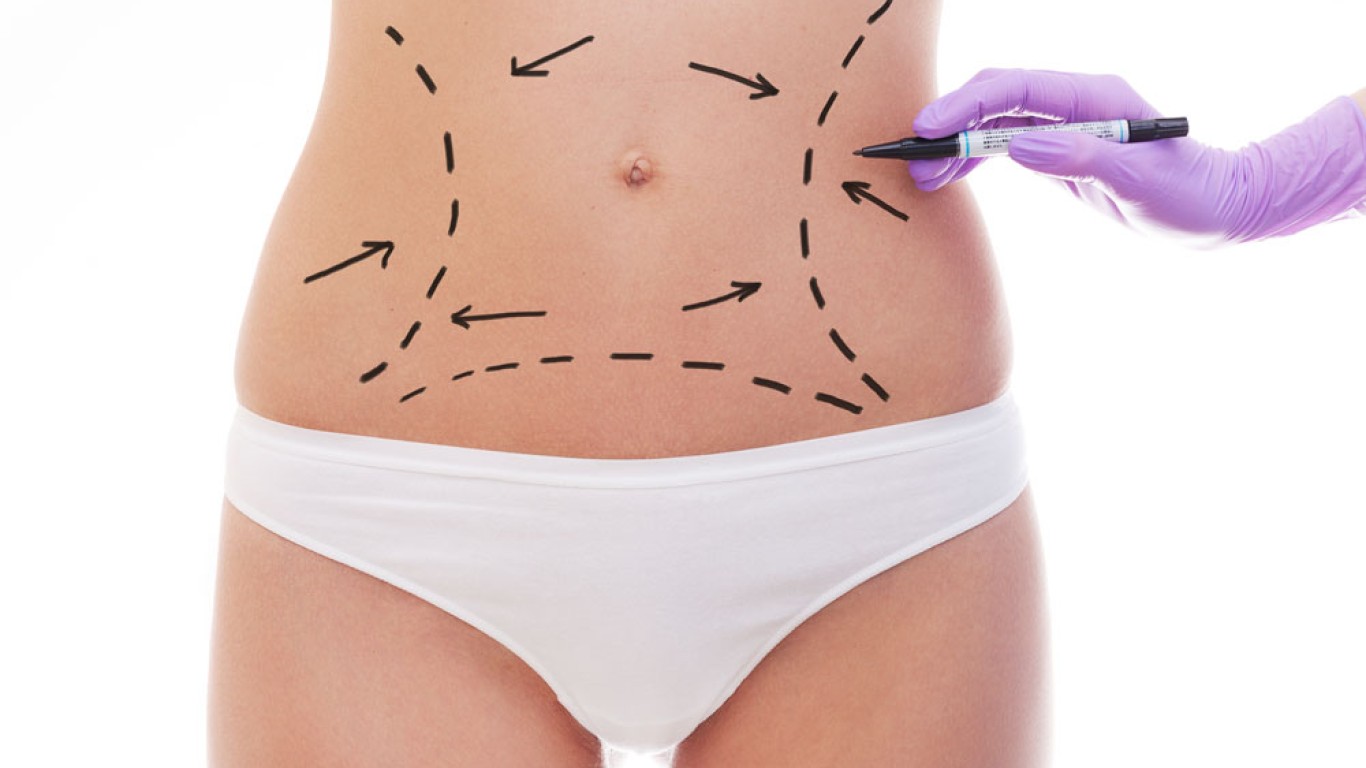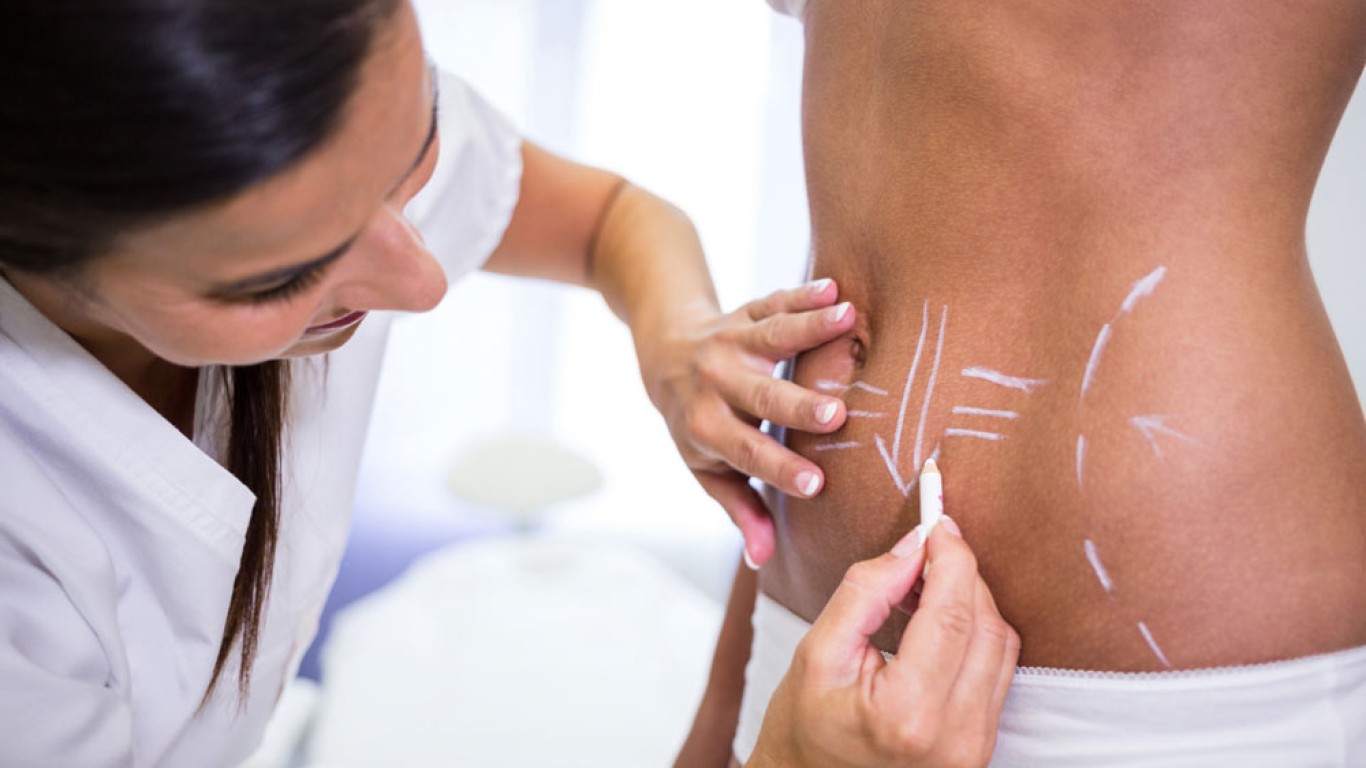Introduction
A mini tummy tuck focuses on the lower abdomen. It offers targeted correction for skin laxity below the navel. The procedure uses a smaller incision and treats a limited area. Because of this, many individuals choose it for focused contour improvement. One of the most common questions relates to the mini tummy tuck scar, including its position, appearance and long-term development. This guide explains what to expect before and after surgery. It also explores how specialists ensure predictable healing in 2025.
Where the Mini Tummy Tuck Scar Is Placed
The mini tummy tuck scar sits low on the abdomen. It’s usually placed within the natural crease above the pubic area. Surgeons plan the incision carefully to ensure discreet placement. Because the procedure treats only the lower abdominal skin, the incision remains shorter than a standard tummy tuck. Surgeons map the incision while the patient is standing. This ensures alignment with clothing lines and natural creases. The scar usually extends no further than the hip area (depending on the amount of loose skin).
How Surgeons Plan the Incision
Incision planning is essential for predictable results. Surgeons assess skin behaviour, tension lines, and the amount of skin requiring removal. Additionally, they consider how the scar will settle once tissue is tightened. Advanced imaging tools help map tension patterns across the abdomen. This supports a balanced incision that allows smooth closure and consistent scar healing. Proper planning contributes to an even and controlled mini tummy tuck scar.
What Happens During the Procedure?
A mini tummy tuck follows a structured sequence:
- Firstly, the low abdominal incision is created.
- Secondly, the surgeon lifts the skin to access the lower muscle layer.
- Thirdly, loose skin is trimmed and tightened.
- Fourthly, the surgeon repairs mild separation of the lower abdominal muscles if present.
- Finally, the incision is closed using layered sutures that support controlled tension.
Because the procedure affects a limited area, recovery is generally shorter than a full abdominoplasty.
How the Mini Tummy Tuck Scar Looks Immediately After Surgery
Immediately after surgery, the mini tummy tuck scar appears red or pink. This is due to early healing phases. Swelling around the incision is also expected. The scar will flatten and fade gradually, although some variation between individuals is normal. Compression garments are worn to reduce swelling and protect the incision. These garments also help maintain lower abdominal contour and support early scar stability.

Mini Tummy Tuck Scar Healing Timeline
Scar maturation follows predictable phases:
- During the first few weeks, the scar appears raised and firm.
- After eight to twelve weeks, the colour begins to fade.
- Over time, the scar softens and flattens as collagen rearranges.
- Most scars continue improving for twelve to eighteen months.
This timeline reflects normal collagen behaviour during wound healing.
Techniques Used to Support Better Scar Outcomes
Several techniques help improve scar appearance.
- Surgeons use layered closure to reduce tension on the skin.
- Tension reduction is important because excessive strain can widen the scar.
- Advanced suture methods stabilise deeper tissues, allowing the surface layer to heal smoothly.
Additionally, clinics often recommend silicone-based products once healing progresses. This is because silicone helps regulate moisture and collagen production. These steps contribute to a refined mini tummy tuck scar.
Why Tension Control Matters
Tension is one of the biggest factors influencing scar shape. When tissues are pulled tightly, the body produces more reactive collagen. Therefore, controlled tension during closure supports better healing. Surgeons assess skin quality before surgery to estimate how tissues will behave. They also use internal sutures for reinforcement, reducing reliance on the skin for support.
Postoperative Care for Mini Tummy Tuck Scar Management
Postoperative care plays a significant role in scar appearance:
- Keep the incision clean and dry during early healing.
- Avoid stretching movements that place pressure on the lower abdomen.
- Avoid high heat exposure because it may increase swelling.
- Follow compression garment schedules.
Once cleared by the surgeon, patients can begin using scar gels or sheets. Consistent care supports smoother scar development.
The Role of Skin Quality in Scar Appearance
Skin thickness, elasticity and collagen quality influence scar behaviour. Individuals with thicker skin often form more visible scars. Those with thinner skin experience different healing patterns. Hydration levels and overall skin health also contribute. These factors help explain why each mini tummy tuck scar matures differently. Surgeons adjust tension, closure method and postoperative care instructions based on these characteristics.
Conclusion
A mini tummy tuck scar is positioned low on the abdomen. It also follows a predictable healing pattern. Through careful incision planning, structured closure, and proper postoperative care, specialists support smoother scar development and balanced lower abdominal contour. The mini tummy tuck remains a targeted option for those needing correction below the navel.
If you’d like to find out more about lower tummy tuck scarring, visit the ACIBADEM Beauty Center tummy tuck page.
Frequently Asked Questions
It is shorter than a full tummy tuck scar.
Yes, scars soften and fade throughout the maturation process.
Yes, it is placed low for better discretion.
It corrects mild lower abdominal muscle separation.
Most scars improve noticeably after twelve to eighteen months.














